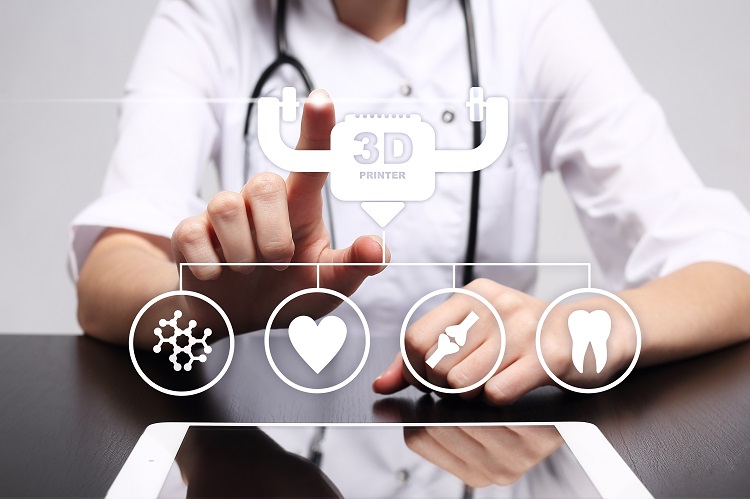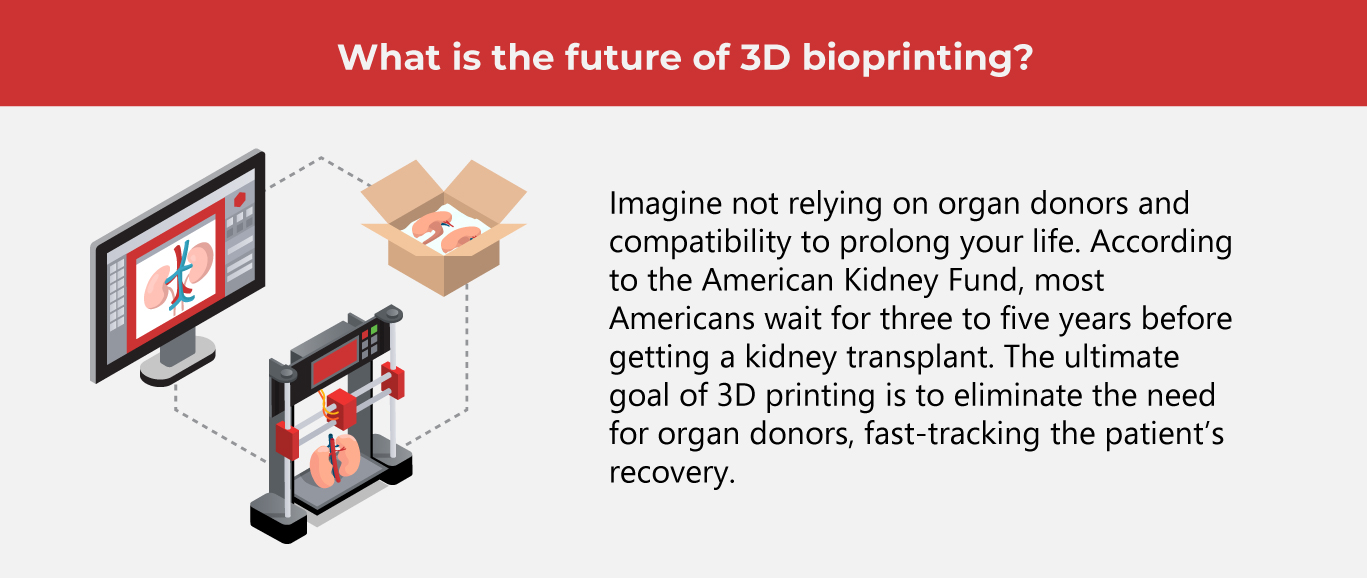7 Ways We Benefit from 3D Bioprinting

What's the next big thing in surgery? Instead of relying on donors whose organs may or may not be compatible with the patients', doctors are exploring printing out organs for transplant. Thanks to rapidly evolving technology, this medical breakthrough may happen sooner than you think.
3D printing has been around since the 1980s, with Charles Hull pioneering stereolithography, a process that enabled the direct printing of digital data into three-dimensional items. This innovation encouraged the technology's widespread use in manufacturing, research and development, and prototyping.
Today, 3D printing has also impacted the medical sector through bioprinting, which uses living cells, biomaterials, and specialized printers to print living tissues and organs.
Also read: Your Mobile Cares About Your Mental Health
How does bioprinting work?
The process begins with harvesting the patient's cells through minor surgery or a needle biopsy. Doctors can grow the cells in a laboratory with an extracted sample typically smaller than an SD memory card. This is done by feeding the cells with nutrients in temperatures and conditions that replicate the insides of the human body.
The cells are mixed with bioink, made of living cells and other biomaterials like hydrogel and collagen that keep the cells together. These materials must be non-toxic and biocompatible to optimize the patient's health.
The duration of bioprinting depends on the intended product, resolution requirements and other factors. While printing usually takes hours, the after process is much longer. To determine if implantation is possible, doctors conduct several tests, including a biopsy, which takes at least a month.
To date, bioprinting has been used to grow and transplant tissues like skin, bone, ear tissue, and other structures primarily composed of cartilage.
5 Medical Milestones with bioprinting
3D bioprinting has many medical applications, such as tissue engineering, regeneration, and pharmaceutical innovation. While transplantable 3D-printed organs are the ultimate goal, this technology has already achieved several milestones, proving its potential in the health industry.
- Mini liver
In 2019, the Human Genome and Stem Cell Research in Sao Paolo, Brazil, was able to bioprint a mini liver. The process took 90 days, from blood collection to organ tissue production. The 3D-bioprinted mini liver functions like the typical liver, generating essential proteins, retaining nutrients, and secreting bile. According to scientists, more experimentation needs to be done to produce a full-size liver; their project's success proves that they're heading in the right direction.
- Cornea
According to the World Health Organization, 2.2 billion people have impaired vision, with half of the cases preventable. Productivity losses due to vision impairment amount to more than US$ 411 billion every year. The 3D bioprinting of the cornea can help alleviate this crisis, especially since corneal disease is the leading cause of blindness.
In 2022, scientists in Hyderabad, India, produced the world's first bioprinted cornea, which was successfully transplanted in a rabbit. The bioink used in the procedure was obtained from corneal tissue in humans. Though the produced cornea was tested on a rabbit, it is 100% all-natural and contains no animal residue–considered an achievement. Previous efforts in cornea printing used animal or synthetic materials.
With this milestone, it's possible to treat corneal complications like scarring and thinning soon.
- Ear
Microtia is an in-born external ear malformation wherein the ear structure is smaller than usual or non-existent. Those with microtia may suffer from hearing loss or impairment because of the absence or underdevelopment of the ear canal and middle ear. The traditional method to address this is gathering cartilage from the client's ribs and shaped into an ear, requiring surgical admission.
But in 2022, a woman in the US was fitted with a printed ear made from her harvested cells. Compared to the previous process, transplanting the 3D-printed ear takes only a few hours and does not require hospital surgery. Spearheaded by 3DBio Therapeutics, the clinical trial has proven that bioprinting is viable for biocompatibility and shape matching in humans.
- Nose
Aside from the ear, another cartilaginous facial structure is the nose. It's no wonder the French-based Toulouse University Hospital and the Cladius Regaud Institute completed a full nasal reconstruction using printed biomaterial in 2022.
The patient, treated for naval cavity cancer almost a decade ago, lost part of her nose due to chemotherapy and radiotherapy. Her previous attempt at nasal reconstruction via skin grafting failed, and she found wearing prosthesis challenging.
The team studied 3D images of the patient's nose before her cancer treatment to jumpstart the process. The biomaterial was implanted under the patient's forearm to allow blood vessels to increase, forming tissue. After two months, this device was transferred to the nasal area through microsurgery, which linked the blood vessels of the device and the patient's other body parts. After ten days under hospital care and antibiotic treatment, the patient reported doing well with her fully functioning nose.
- Skin
French company Poietis has developed Poieskin, a skin model with total thickness, including an 8-layer epidermis. Commercially launched in 2018, the product can be quickly reproduced and customizable thanks to 3D bioprinting.
Fabricated from human materials such as primary fibroblasts, Poieskin is made by bioprinting the dermis and keratinocytes. After maturation and epidermal stratification (layering the cells in the epidermis), the company ensures quality control with each printed layer to manufacture cells and tissue.
The 3D-printed skin can benefit burn victims, reconstructive surgery, and patients with chronic wounds, such as diabetic ulcers.
Also read: Holograms: From Sci-Fi to the Science of Health
The pros & cons of 3D bioprinting
Like any other technology, 3D bioprinting has its benefits and downsides. Here's a quick rundown to beef up your knowledge.
Advantages
- Accurately recreates the tissue's/organ's structure
- Potential for customization to meet patient's specific needs
- Avoids animal testing
- Treatment and drug effects can be closely monitored
- Allows for automation, minimizing human errors
Disadvantages
- Premium pricing
- Complex process
- Increased power consumption
- Challenging to preserve cell conditions
- Ethical considerations
Health professionals, inventors, and engineers are working hard to propel 3D bioprinting to the next level, harnessing its potential to transform future medical interventions.

 As one of the Top 19 EMS companies in the world, IMI has over 40 years of experience in providing electronics manufacturing and technology solutions.
As one of the Top 19 EMS companies in the world, IMI has over 40 years of experience in providing electronics manufacturing and technology solutions.
We are ready to support your business on a global scale.
Our proven technical expertise, worldwide reach, and vast experience in high-growth and emerging markets make us the ideal global manufacturing solutions partner.
Let's work together to build our future today.
Other Blog


